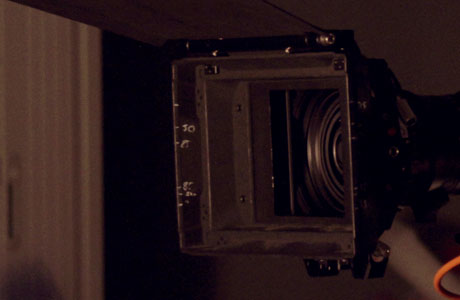Courses
Audiovisual production course June 2014
Audiovisual language is articulated around a basic discipline: audiovisual production. To tell a story properly and intelligibly, it is necessary to learn its basics from the beginning. Likewise, if one wants to break the rules, it is necessary to know first the grammar that orders them.
This course is“the mother of all courses“. From the scale of the shots to the relationship between sound and image, we will review all the basic concepts of audiovisual production. Aimed at all those people with no knowledge of cinematographic language, with the objective of mastering the audiovisual storytelling techniques that turn a video into a well-told and edited story.
TEACHER: Julio Gómez.
Julio Gómez is an audiovisual trainer and beta tester specialized in digital cinematography with more than 12 years of experience. Graduated in Audiovisual Communication at UCM and regular collaborator in training for Sony, Canon, Apple, Dedo Weigert Films. External professor of image technology in masters for UCAM, UEM, USAB and UNED, he publishes periodically in the media “Cameraman” and “DSLR Magazine”, as well as being a speaker at the festivals TEA, DiBa and Fotogenio.
DURATION: 20 hours
PRICE: 320€ (280€ for all reservations made before June 1st). You can get up to 20% discount if you sign up for several courses. Discounts are not cumulative.
WHEN: From June 2 to 6, 2014. Afternoons from 16h to 20h (times may vary slightly).
WHERE: Campus Audiovisual Ces. See in Google Maps If you need any kind of information you can contact 709 MR by email or phone (668826304).
COURSE CODE: REA28-260514
AIMED AT: photographers and all those who want to learn audiovisual grammar.
CONTENTS:
1. The scale:
Determining facts:
- Target object size
- Distance between the object and the camera
- Lens focal length
Scale of plans:
- Great general plan
- General plan
- Overall plan
- Entire plane
- Middle plane
- American plane
- Middle plane
- Medium short plane
- Close-up
- Close-up close-up
- Detail plan
2. The format:
The ratio
- Air Ratio
- Academic format
- Wide formats
- 16:9
- 1,85:1
- 2,35:1
- IMAX
3. Composition:
The spatial structure of the image
- Overlapping planes
- Size variation
- Distance from the base of the frame
- Linear perspective
- Aerial perspective
- Color change
Visual weight
- Determining factors
- Location on the surface of the frame
- Object size
- Irregular and regular shapes
- The color
- Depth of field
- Textured finish vs. polished finish
- Isolation
Visual directions
- On stage
- Represented
- Induced
Horizontal formats
Perspective
Looks of the characters (Visual lines)
Attraction mechanisms
- Reading
4. Concepts of shot, sequence and shot-sequence:
- The plan
On the set
- Take
- Framing
- Field
In the assembly
Basic elements
- Angulation and size
- Neutral
- Pricked
- Contrapicado
- Mobility
- Fixed plane
-Panoramic - Moving plane
-Travelling
-Optical Travelling (Zoom)
- Fixed plane
- Duration
- Sequence
- Sequence plan
- Connotations of the foreground
5. The point of view:
Literal
Figured
Metaphorical
Non-focused stories
Internal focus stories
- Fixed
- Variable
- Multiple
External focus stories
- Ocularization
- Auricularization
- Film focus
6. Temporary architecture:
Order
- In continuity
- In parallel
- In alternation
- Flash-Back
- Flash-Forward
Duration
- The scene
- The pause
- The ellipsis
- The summary
- The extension
Frequency
- Simple
- Multiple
- Repetitive
- Iterative
7. The assembly:
The syntax of the sequence
- Spatial continuity
- Relative spatial discontinuity
- Total spatial discontinuity
- The raccord
- Of objects
- Speed
- Lighting
- Sound
- From gaze
– From position
– Field/counterfield
– Subjective gaze - From address
On axis
On plane
- Plane changes
- By cut
- The chained
- Melting
- The weather
- Alternate mounting
- Parallel assembly
- Convergent assembly
Ideologies of assembly
- Creator of meaning (Eisenstein)
- Assembly of attractions
- Subordinate to the narrative (Bazin)
- Internal assembly (Staging)
Sound-image relationships
- Added value
- Text (voice, words)
- Music
– Empathic
– Anempathic
- Acousmatic listening and visualized listening
- The sound in
- Out of field
- Sound off
- Ambient sound
- The internal sound
– Objective
– Subjective - Sound on the air
– Crossing spatial barriers
– Crossing temporal barriers - The music according to its source
– Diegetic
– Extradiegetic - Silence
– From the expressive point of view
– From the dramatic point of view
– Preparation of silence
8. Questions and Answers
You can download the documentation for the course here
For any further information please contact us at info@709mediaroom.com.


